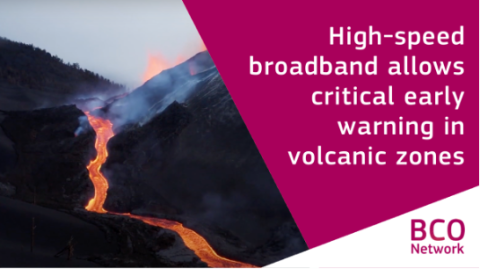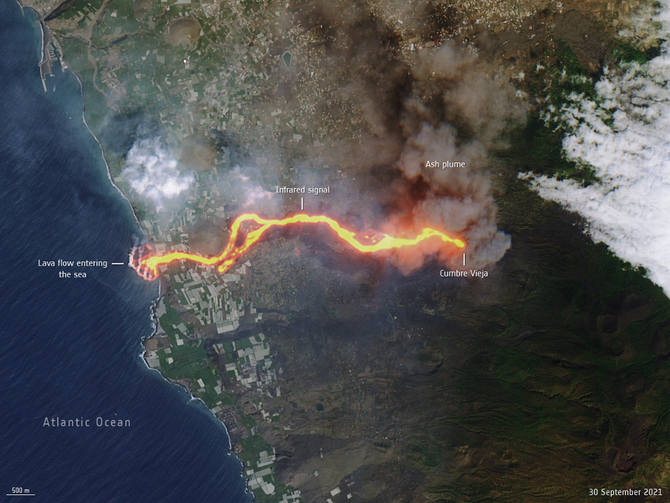High-speed broadband allows critical early warning in volcanic zones - VolRiskMac (video)
VolRiskMac is an EU-funded project monitoring volcanic activity in Macaronesia using real-time data from sensors relayed via critical broadband infrastructure.

The European Broadband Competence Offices Network Support Facility
Macaronesia, a group of four archipelagos in the North Atlantic Ocean (Azores, Madeira, Canarias and Cape Verde), is a volcanic area home to over 3.2 million people. In 2021, the most destructive volcanic eruption seen in Europe in 70 years originated on the Canarias island of La Palma, lasting 85 days and prompting the evacuation of approximately 7,000 people.

Flow of lava from the volcano erupting on the Spanish island of La Palma
Copyright: European Space Agency
The monitoring of volcanic activity is essential to providing early warning and saving lives. To detect volcanic precursors early enough, monitoring relies on remote sensors, instant data transmission and automated analysis and alerts. All of these require reliable and robust high-speed broadband.
To understand how essential this is, the European Broadband Competence Offices (BCO) Network interviewed INVOLCAN, the Volcanic Institute of the Canary Islands, to learn about their project, ‘VolRiskMac’, which is co-financed by the EU’s Interreg MAC programme.
As Pedro Hernández, Senior Researcher at INVOLCAN, explains in this video interview, the risk of destruction and loss of life is much greater in Macaronesia now, compared to 50 years ago, due to the increase in population and socio-economic development in the area.
The objective of the VolRiskMac project, as explained by Luca D’Auria, Director of the Volcano Monitoring Area at INVOLCAN, is to improve the early warning system for volcanic eruptions and earthquakes, in order to be able to provide information to civil protection authorities about the evolution of volcanic precursors and alert them as early as possible in the case of an incoming eruption.
The project involves the design and implementation of geochemical and geophysical networks, and optical remote sensing networks. On site, each station is equipped with a modem with a SIM card to allow the project to send data through the mobile phone network.
As Mr D’Auria explains:
“Volcano monitoring relies on multi-parametric data acquired in real time, so there is a massive amount of data which needs to be transmitted, recorded and analysed automatically. This requires resilient broadband data transmission systems: good connectivity is fundamental for achieving real time monitoring of active volcanoes.”
This interview was filmed as part of the European Broadband Competence Offices (BCO) Network’s work to raise awareness of EU support for high-speed broadband deployment and share good practices in broadband projects. Discover more interviews in the BCO Network YouTube playlist and more broadband good practices, news and resources in the BCO Network Library.
